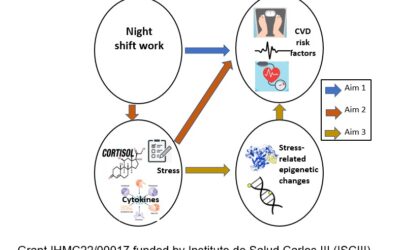Nom i cognoms / Name and surname
Jordi Ribas Maynou
Afiliació / Affiliation
Universitat de Girona
Programa de finançament europeu en que s’enmarca aquest projecte? / European funding programme in which this project is being carried out?
Marie Skłodowska-Curie Schemes
Títol del projecte / Project title
Genetic implication of sperm Toroid Linker Regions
Número del projecte / Project number
TECSPR19-1-0003
Breu explicació del projecte / Brief explanation of your project
The World Health Organization recognizes infertility as a disease and a public health issue. Fertility improvement is established as a goal by the United Nations, and the understanding of the mechanisms leading to diseases is framed in one of the challenges of European H2020 program.
The sperm chromatin has a unique condensation through the exchange of histones by protamines, which form toroidal structures condensing about 50 kilobases of DNA. The mammalian sperm chromatin organization model shows that toroids are linked between them and to the nuclear matrix by the Toroid Linker Regions (TLR). TLR are the most accessible DNA regions in the sperm, making them likely active sites in the early embryo after fertilization. Nowadays, different studies pointed out that TLR are important for embryo development because the presence of DNA breaks in TLR delay embryo development and are related to pregnancy loss. However, the genetic mechanisms causing these effects are still not known.
The present project aims to describe the embryo genetic affectations derived from an impairment of TLR. For that, genetic sequencing of sperm TLR will be performed through the control of a specific sperm chromatin fragmentation and using Next Generation Sequencing. The establishment of TLR sequences will be a very significant finding in sperm chromatin organization, since no studies have been able to map these regions in sperm, and will allow finding the relation between TLR and specific genes. To understand the genetic effects of TLR DNA breaks in embryo development, transcriptomic and gene sequencing technologies will be applied to different groups of embryos (produced by sperm with and without TLR DNA breaks) both after fertilization and at blastocyst stage. These genetic effects will be translated into differences of protein presence, that will be used for the generation of innovative embryo or sperm selection methodologies
Results of the project will directly contribute to the knowledge of sperm chromatin organization and the effects of the most open regions of the sperm cell to embryo development, opening paths for the generation of new methodologies and treatments for male factor infertility, focused on reducing pregnancy loss.
Enllaç a la pàgina web del projecte / Link to your project website
https://www.udg.edu/ca/directori/pagina-personal?ID=172456
Repte en que s’emmarca aquest projecte / Challenge within the framework of this project
Does not apply

















